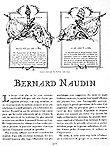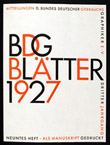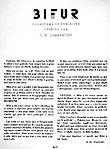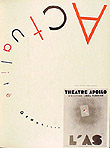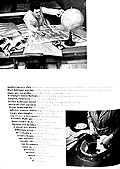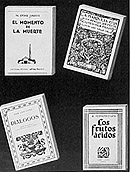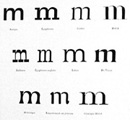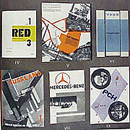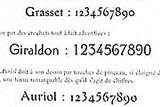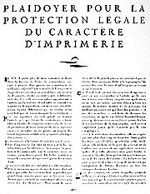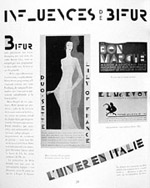II: AMG Typography and Design
The typographic layout of Arts et Métiers Graphiques can be considered as the most pervasive theme of the magazine. Like perpetual advertising, each issue was almost entirely hand-set with Deberny et Peignot typefaces that changed with the trends of the time. In 1927, AMG was first set in "Naudin," a traditional serif typeface with long ascenders from the Deberny and Peignot catalogue. As the content became more progressive, sans serifs gradually appeared, espQecially "Europe," which was Bauer's "Futura" with a Deberny et Peignot name. Also, when Cassandre's "Bifur" was introduced in 1928, it became an instant signature display typeface for advertisements and articles that needed an ultra-modernistic look. In accordance with the 1937 Exposition, which deemed "Peignot" as the official typeface of the event, AMG 59 was set entirely in the same uncial-inspired face (figs. 61-64).
Just as the typeface choices were novel, so too were the text layouts that employed those faces. The layouts, again showcases of what was possible with Deberny et Peignot type, commonly mimicked the individual article themes with inventive typesetting in illustrative shapes or patterns. Aligned with the foundry's mission to sell type, the creative design of AMG needed to be at the vanguard in order to serve Peignot's ambition of creating a magazine that aspired to be the reference in the graphic arts. Evidence of this is shown in the fact that the magazine's colophon was placed at the front of the issue for all to see, instead as an afterthought squeezed into fine print at the end (figs. 65-67).
Along with elegant typesetting and design, the magazine frequently published articles that discussed type from different perspectives. Type history, type designers, type classification, and type design aesthetics were subjects all broached in Arts et Métiers Graphiques. Startling too is the forethought of Charles Peignot as he published several articles on the copyright protection of typefaces—a topic that has become equally poignant at present with the digital production and easy-replication of typefaces (figs. 68-73).
Figures
